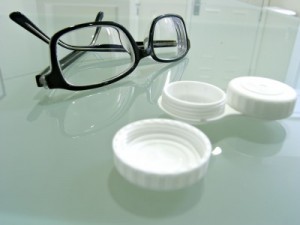 Two thirds of adults need eye glasses or contact lenses, but there is no need to spend $200 or more for a pair of glasses. Insurance and shopping at discount retailers can help cut costs. But if you’re not careful, you could sacrifice lens quality and safety for a few bucks. Here are a few strategies from Money magazine to get the best care for the best price.
Two thirds of adults need eye glasses or contact lenses, but there is no need to spend $200 or more for a pair of glasses. Insurance and shopping at discount retailers can help cut costs. But if you’re not careful, you could sacrifice lens quality and safety for a few bucks. Here are a few strategies from Money magazine to get the best care for the best price.
Insurance Coverage
Usually insurance coverage is worth it if you wear contacts or if you update your glasses every year or two. Coverage also makes sense if your children need corrective eyewear, since children usually need an update every year. But run the numbers to be sure—see what you’d pay with and without insurance. If you don’t work for a company that offers insurance, check out the options at ehealthinsurance.com.
Understand your insurance coverage limits. Coverage usually includes an annual eye exam and a set amount toward the purchase of contacts or glasses.
Where to Buy Glasses and Contacts
Make sure that retailer you buy from is actually in your insurance network, and not that it merely accepts the insurance.
- Doctors’ offices. Optometrists and ophthalmologists tend to sell more expensive eyewear, but offer more personalized service.
- Specialty retailers. Stores that offer great deals (such as buy one, get one free) often press you for upgrades that push the price toward that of doctors’ offices. Plus, you may not qualify for the deal if you have insurance.
- Discount stores. Stores such as Costco have good eyewear at low prices.
- Online retailers. You can get great prices on contacts from online providers, such as 1800CONTACTS.com, ContactsAmerica.com, and AC Lens, but be sure you know the quality of the lenses you are getting
Should you buy extras?
Add-ons can really drive up the price of glasses.
- Photochromic lenses (about $90) that darken in the sun and lighten indoors only make sense if you constantly move from indoors to out.
- High-index lenses ($30-$300) that reduce the thickness and weight of glasses are primarily a cosmetic benefit.
- Glare-reducing, anti-reflective lenses ($50-$115) are helpful if you wear glasses all day or drive a lot at night.
- Good-quality frames ($100-$200) are all you need functionally. Designer frames that cost more are mostly because of the name.
By the way, if you need glasses with magnifying power for reading, the $10 drugstore glasses will do just fine.
The above was summarized from the article “Keep a Keen Eye on Vision Savings,” in Money magazine, May 2012, pp. 55-56.



